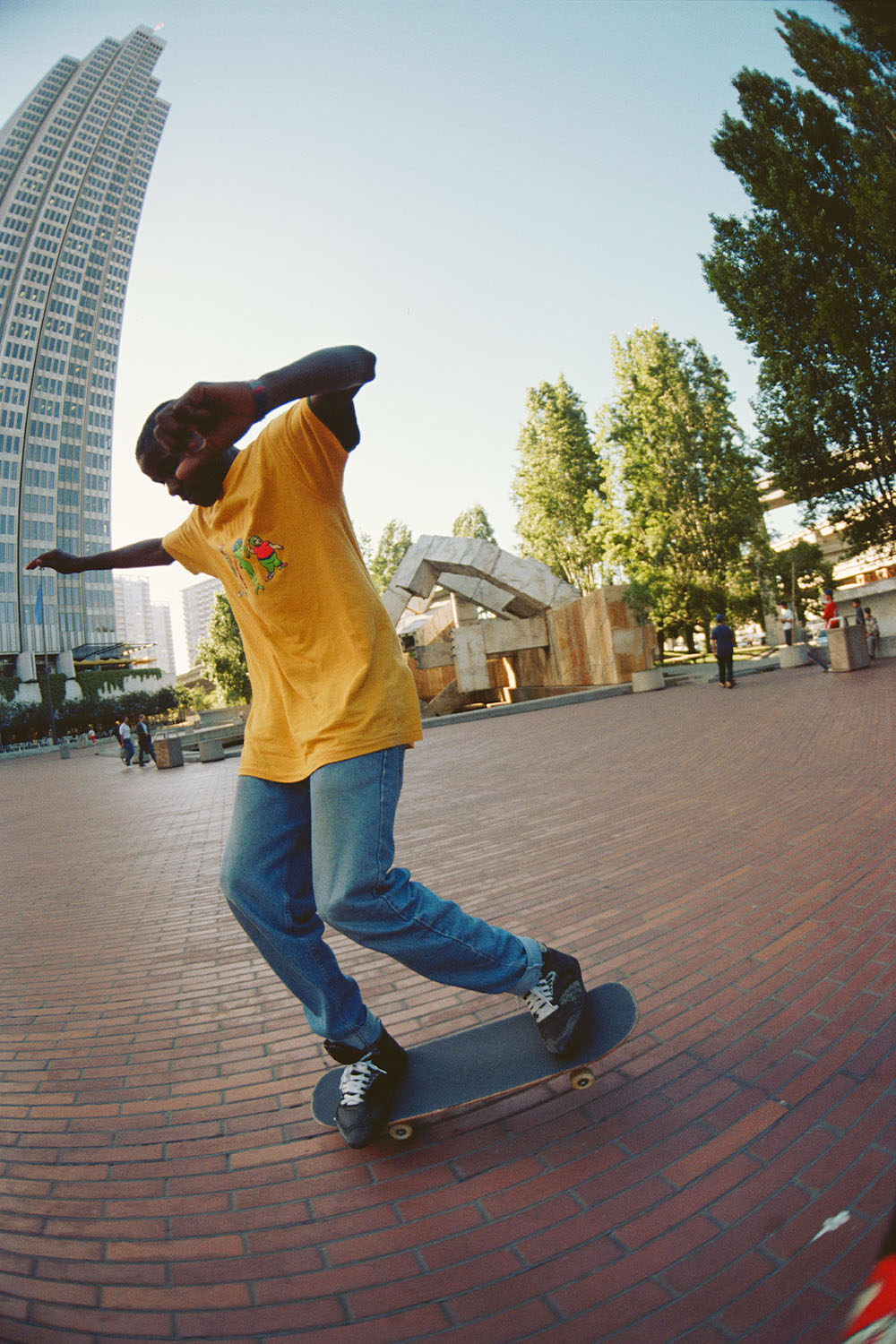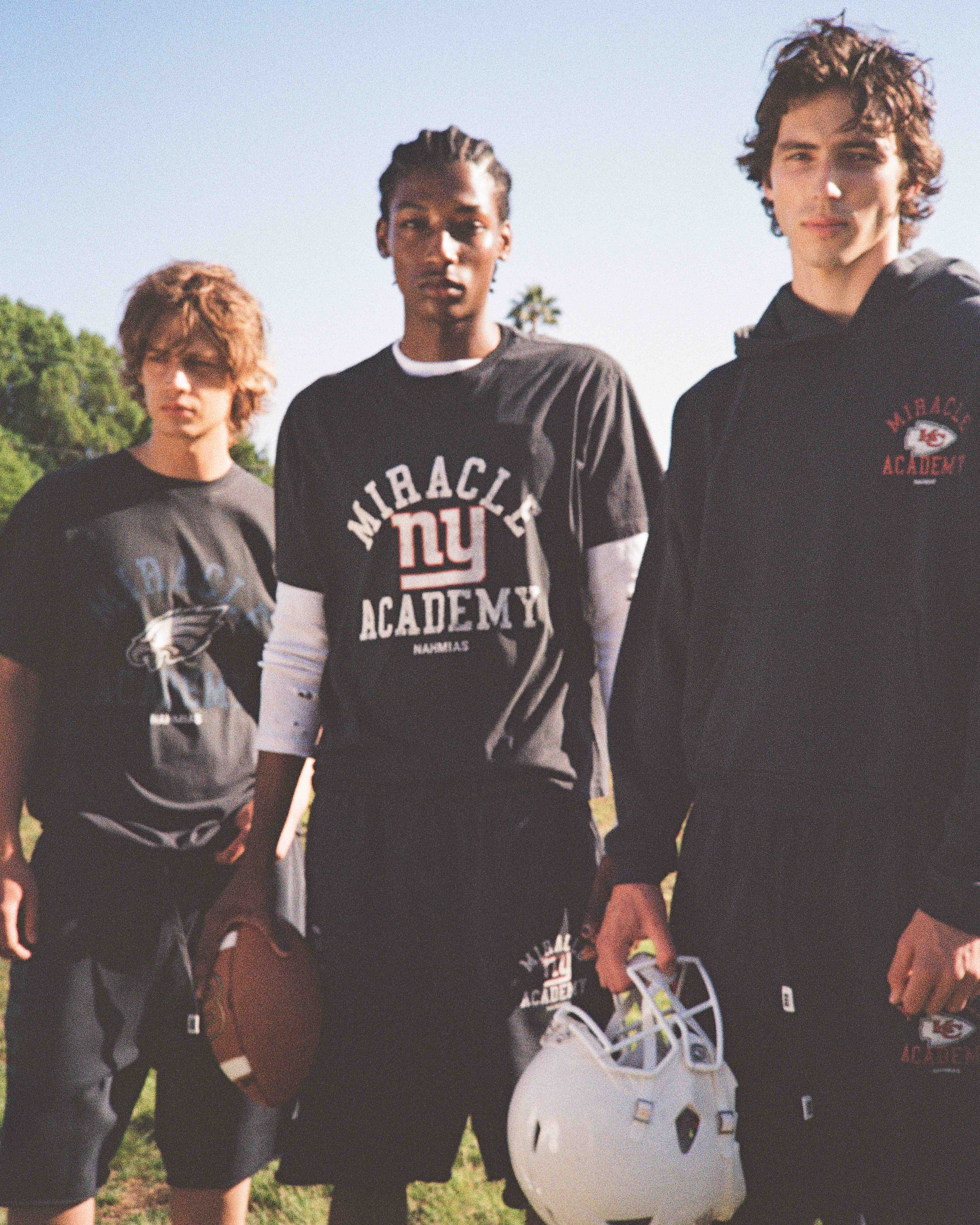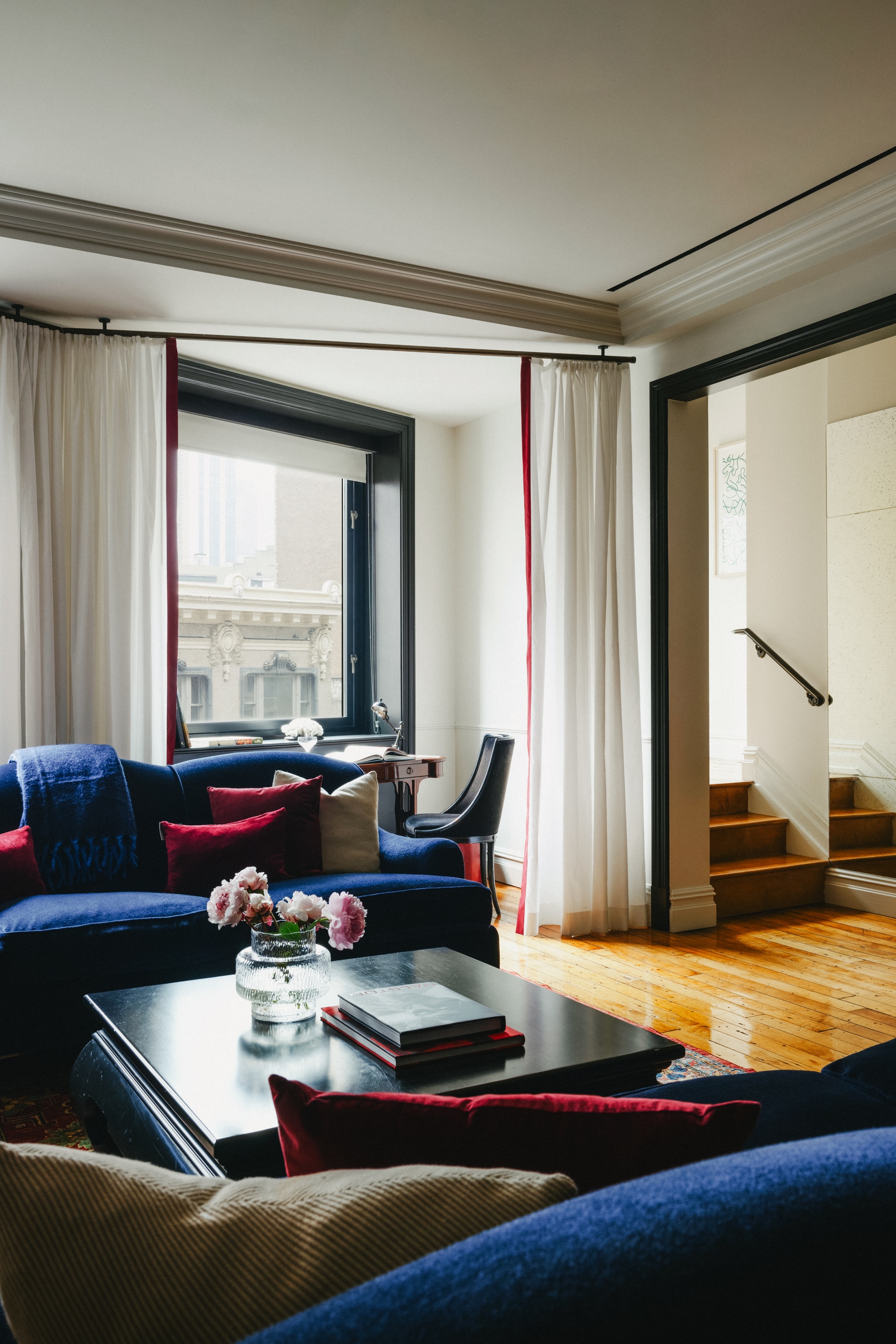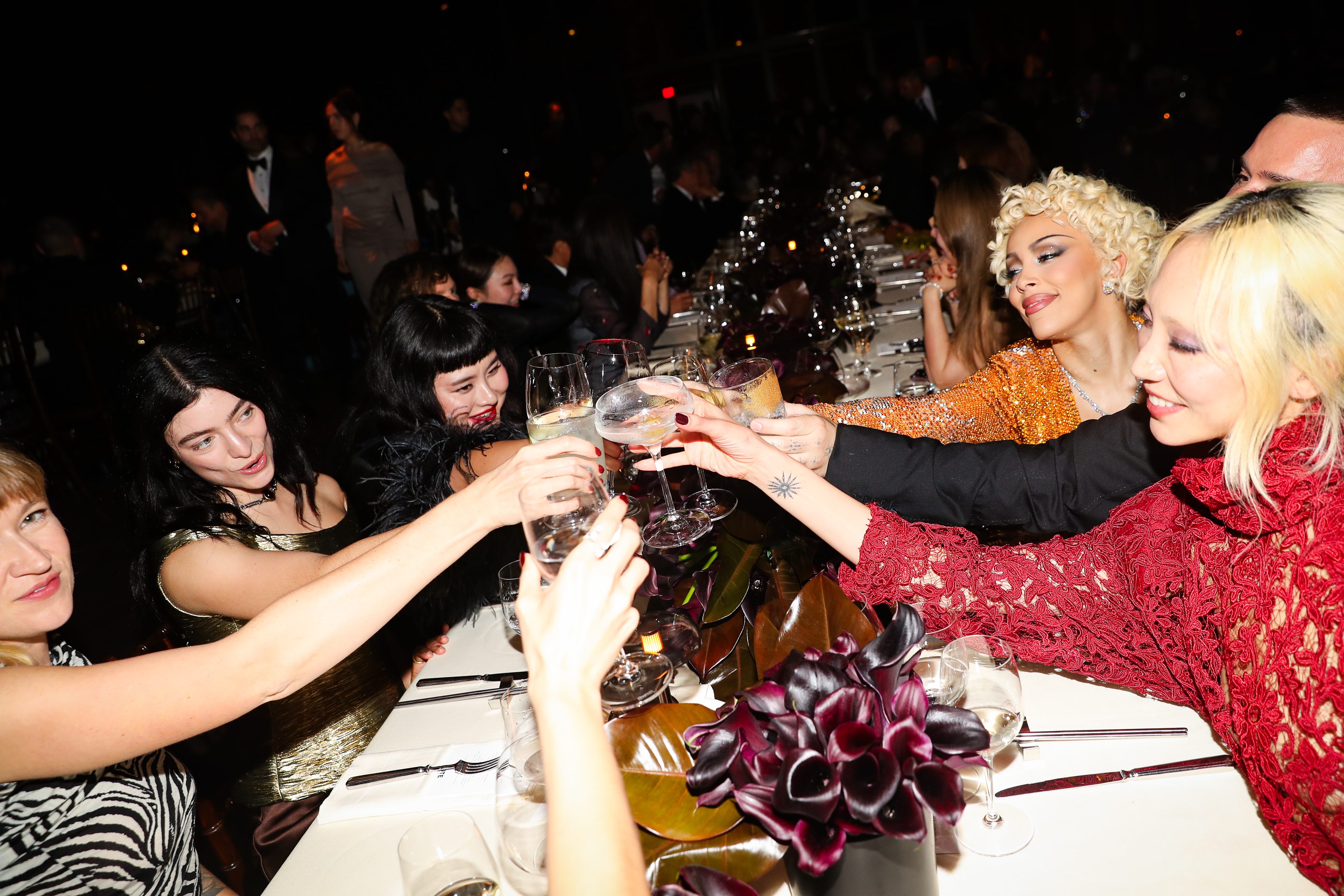





L.A. Dance Project
Dancing is Absolutely Safe
Charlie Hodges, rehearsal director at the L.A. Dance Project, emerges from a side door in the company’s work space (one that houses rehearsal studios, administrative offices—and today, this interview) and navigates the surrounding area nimbly on a pair of crutches.
(The L.A. Dance Project—founded in 2012 by Choreographer and Dancer Benjamin Millepied, Composer Nico Muhly, Art Consultant Matthieu Humery, Founding Producer Charles Fabius, and Nicholas Britell—is a company currently comprised of ten dancers. Since its inception the group has toured Europe and Asia, collaborated with Barbara Kruger, doubled in size, occupied a residency at the Ace Hotel in Downtown Los Angeles—a few steps from their own office.)
Hodges’ cadence is reminiscent of the kind of footsteps you’d trust testing out an ice-sheathed pond. It’s easy to imagine him corralling the dancers, and then Hodges flips this assumption on its head:
“What makes this job different than any job I’ve had is that we are constantly required to wear multiple hats. You get to play all of the parts. You get to be featured in a dance, but you’re also in what would be considered the _corps de ballet_ or the ensemble. You get to be in charge of making big important decisions, but then you don’t have the responsibility of making any decisions at all—you’re just part of the machine,” he says, simultaneously executing a methodical, repetitive roll of both ankles propped on the coffee table in front of him.
Performing in this environment has created an improvisational state of being, one where participants appear to not only be ready for anything—they seem to be expecting it. When Millepied is out of town, meetings and rehearsals are held over Skype. Dancers perform administrative tasks, provide input on costumes, lend a hand in creating choreography, and navigate their repertoire \[“It’s like dancing on different planets. The gravity is different here, the atmosphere is different.”\]. Hodges notes that on off-days it’s important for dancers to “understand themselves enough to figure out what kind of bullshit they need to leave outside.”
And it seems—at least in this moment—that environment is profoundly respected. “I feel like it makes you more dynamic. You appreciate the richness and you cultivate that from a very different point of view. Instead of trying to homogenize everything it’s leant itself towards understanding that sometimes something needs to be different, it wants to be different, and you should allow it to be different. When you get stuck in one job, in one place, your temptation is to find pattern—that’s what we do—and to follow that pattern. When you constantly have to switch you don’t have patterns to rely on so you’re starting from the beginning.”
Basically: don’t assume that “If X then Y so Z.”
William Forsythe’s seminal early 90s creation “Quintett” will be performed by the L.A. Dance Project at the Theatre at Ace Hotel in Downtown L.A. on Friday, October 24th through Sunday, October 26th. The piece was created as a final love letter to Forsyth’s terminally ill wife. Despite the heaviness of the driving concept, the piece exists in a realm of exuberance. A Vimeo on L.A. Dance Project’s website documents Hodges’ performance of the waltz pre-injury. He bounds across the stage, undulating in a playful _pas de deux_ with fellow dancer Julia Eichten, who worked with Millepied at Juilliard and moved to Los Angeles after joining the company. \[Eichten later tells me that when she needs a push to get through a rehearsal she “uses the group.”\]
Those performances absorb every aspect of the group’s environment: “This moment is a consequence of all of the things that have led up to it. What does that produce as far as a performance? If you have an injury, instead of denying it you have to integrate it.” Despite the fact that: a.) My desire to understand Hodges’ injury has aroused a sort of primal curiosity, b.) I am here to ask questions and we’re in the moment where this question seems relevantly appropriate—when I attempt to formulate the ask, the inquiry feels too intimate, and I don’t.
The Dorcas gazelle is an antelope species native to Northern Africa. Survival of the herd depends on a mixture of athleticism and adaptability—and yet within the group framework there is a feature not yet understood: In critical situations the herd makes hair-trigger collective decisions, as if communicating telepathically. How tenuous is that link? How is that little understood balance sustained?
I mull over the Dorcas as I speak with dancer Rachelle Rafailedes: I imagine this projection of invincibility, the true function placed somewhere outside of the individual. This revelation morphs into a kind of vague runaway concern about the gazelles, about enduring and our own mortality salience, about a moment of exhaustion causing an injury, about soldiering on in the face of setbacks. So I ask Rafailedes: What do you do when you’re tired?
“I probably just sleep,” she says, pragmatically, amused.
* * *
Written by Sway Benns
Photographer: Michael Tighe at MichaelTighePhotography.com.
 

 

 
L.A. Dance Project
Dancing is Absolutely Safe
Charlie Hodges, rehearsal director at the L.A. Dance Project, emerges from a side door in the company’s work space (one that houses rehearsal studios, administrative offices—and today, this interview) and navigates the surrounding area nimbly on a pair of crutches.
(The L.A. Dance Project—founded in 2012 by Choreographer and Dancer Benjamin Millepied, Composer Nico Muhly, Art Consultant Matthieu Humery, Founding Producer Charles Fabius, and Nicholas Britell—is a company currently comprised of ten dancers. Since its inception the group has toured Europe and Asia, collaborated with Barbara Kruger, doubled in size, occupied a residency at the Ace Hotel in Downtown Los Angeles—a few steps from their own office.)
Hodges’ cadence is reminiscent of the kind of footsteps you’d trust testing out an ice-sheathed pond. It’s easy to imagine him corralling the dancers, and then Hodges flips this assumption on its head:
“What makes this job different than any job I’ve had is that we are constantly required to wear multiple hats. You get to play all of the parts. You get to be featured in a dance, but you’re also in what would be considered the _corps de ballet_ or the ensemble. You get to be in charge of making big important decisions, but then you don’t have the responsibility of making any decisions at all—you’re just part of the machine,” he says, simultaneously executing a methodical, repetitive roll of both ankles propped on the coffee table in front of him.
Performing in this environment has created an improvisational state of being, one where participants appear to not only be ready for anything—they seem to be expecting it. When Millepied is out of town, meetings and rehearsals are held over Skype. Dancers perform administrative tasks, provide input on costumes, lend a hand in creating choreography, and navigate their repertoire \[“It’s like dancing on different planets. The gravity is different here, the atmosphere is different.”\]. Hodges notes that on off-days it’s important for dancers to “understand themselves enough to figure out what kind of bullshit they need to leave outside.”
And it seems—at least in this moment—that environment is profoundly respected. “I feel like it makes you more dynamic. You appreciate the richness and you cultivate that from a very different point of view. Instead of trying to homogenize everything it’s leant itself towards understanding that sometimes something needs to be different, it wants to be different, and you should allow it to be different. When you get stuck in one job, in one place, your temptation is to find pattern—that’s what we do—and to follow that pattern. When you constantly have to switch you don’t have patterns to rely on so you’re starting from the beginning.”
Basically: don’t assume that “If X then Y so Z.”
William Forsythe’s seminal early 90s creation “Quintett” will be performed by the L.A. Dance Project at the Theatre at Ace Hotel in Downtown L.A. on Friday, October 24th through Sunday, October 26th. The piece was created as a final love letter to Forsyth’s terminally ill wife. Despite the heaviness of the driving concept, the piece exists in a realm of exuberance. A Vimeo on L.A. Dance Project’s website documents Hodges’ performance of the waltz pre-injury. He bounds across the stage, undulating in a playful _pas de deux_ with fellow dancer Julia Eichten, who worked with Millepied at Juilliard and moved to Los Angeles after joining the company. \[Eichten later tells me that when she needs a push to get through a rehearsal she “uses the group.”\]
Those performances absorb every aspect of the group’s environment: “This moment is a consequence of all of the things that have led up to it. What does that produce as far as a performance? If you have an injury, instead of denying it you have to integrate it.” Despite the fact that: a.) My desire to understand Hodges’ injury has aroused a sort of primal curiosity, b.) I am here to ask questions and we’re in the moment where this question seems relevantly appropriate—when I attempt to formulate the ask, the inquiry feels too intimate, and I don’t.
The Dorcas gazelle is an antelope species native to Northern Africa. Survival of the herd depends on a mixture of athleticism and adaptability—and yet within the group framework there is a feature not yet understood: In critical situations the herd makes hair-trigger collective decisions, as if communicating telepathically. How tenuous is that link? How is that little understood balance sustained?
I mull over the Dorcas as I speak with dancer Rachelle Rafailedes: I imagine this projection of invincibility, the true function placed somewhere outside of the individual. This revelation morphs into a kind of vague runaway concern about the gazelles, about enduring and our own mortality salience, about a moment of exhaustion causing an injury, about soldiering on in the face of setbacks. So I ask Rafailedes: What do you do when you’re tired?
“I probably just sleep,” she says, pragmatically, amused.
* * *
Written by Sway Benns
Photographer: Michael Tighe at MichaelTighePhotography.com.

L.A. Dance Project
Dancing is Absolutely Safe
Charlie Hodges, rehearsal director at the L.A. Dance Project, emerges from a side door in the company’s work space (one that houses rehearsal studios, administrative offices—and today, this interview) and navigates the surrounding area nimbly on a pair of crutches.
(The L.A. Dance Project—founded in 2012 by Choreographer and Dancer Benjamin Millepied, Composer Nico Muhly, Art Consultant Matthieu Humery, Founding Producer Charles Fabius, and Nicholas Britell—is a company currently comprised of ten dancers. Since its inception the group has toured Europe and Asia, collaborated with Barbara Kruger, doubled in size, occupied a residency at the Ace Hotel in Downtown Los Angeles—a few steps from their own office.)
Hodges’ cadence is reminiscent of the kind of footsteps you’d trust testing out an ice-sheathed pond. It’s easy to imagine him corralling the dancers, and then Hodges flips this assumption on its head:
“What makes this job different than any job I’ve had is that we are constantly required to wear multiple hats. You get to play all of the parts. You get to be featured in a dance, but you’re also in what would be considered the _corps de ballet_ or the ensemble. You get to be in charge of making big important decisions, but then you don’t have the responsibility of making any decisions at all—you’re just part of the machine,” he says, simultaneously executing a methodical, repetitive roll of both ankles propped on the coffee table in front of him.
Performing in this environment has created an improvisational state of being, one where participants appear to not only be ready for anything—they seem to be expecting it. When Millepied is out of town, meetings and rehearsals are held over Skype. Dancers perform administrative tasks, provide input on costumes, lend a hand in creating choreography, and navigate their repertoire \[“It’s like dancing on different planets. The gravity is different here, the atmosphere is different.”\]. Hodges notes that on off-days it’s important for dancers to “understand themselves enough to figure out what kind of bullshit they need to leave outside.”
And it seems—at least in this moment—that environment is profoundly respected. “I feel like it makes you more dynamic. You appreciate the richness and you cultivate that from a very different point of view. Instead of trying to homogenize everything it’s leant itself towards understanding that sometimes something needs to be different, it wants to be different, and you should allow it to be different. When you get stuck in one job, in one place, your temptation is to find pattern—that’s what we do—and to follow that pattern. When you constantly have to switch you don’t have patterns to rely on so you’re starting from the beginning.”
Basically: don’t assume that “If X then Y so Z.”
William Forsythe’s seminal early 90s creation “Quintett” will be performed by the L.A. Dance Project at the Theatre at Ace Hotel in Downtown L.A. on Friday, October 24th through Sunday, October 26th. The piece was created as a final love letter to Forsyth’s terminally ill wife. Despite the heaviness of the driving concept, the piece exists in a realm of exuberance. A Vimeo on L.A. Dance Project’s website documents Hodges’ performance of the waltz pre-injury. He bounds across the stage, undulating in a playful _pas de deux_ with fellow dancer Julia Eichten, who worked with Millepied at Juilliard and moved to Los Angeles after joining the company. \[Eichten later tells me that when she needs a push to get through a rehearsal she “uses the group.”\]
Those performances absorb every aspect of the group’s environment: “This moment is a consequence of all of the things that have led up to it. What does that produce as far as a performance? If you have an injury, instead of denying it you have to integrate it.” Despite the fact that: a.) My desire to understand Hodges’ injury has aroused a sort of primal curiosity, b.) I am here to ask questions and we’re in the moment where this question seems relevantly appropriate—when I attempt to formulate the ask, the inquiry feels too intimate, and I don’t.
The Dorcas gazelle is an antelope species native to Northern Africa. Survival of the herd depends on a mixture of athleticism and adaptability—and yet within the group framework there is a feature not yet understood: In critical situations the herd makes hair-trigger collective decisions, as if communicating telepathically. How tenuous is that link? How is that little understood balance sustained?
I mull over the Dorcas as I speak with dancer Rachelle Rafailedes: I imagine this projection of invincibility, the true function placed somewhere outside of the individual. This revelation morphs into a kind of vague runaway concern about the gazelles, about enduring and our own mortality salience, about a moment of exhaustion causing an injury, about soldiering on in the face of setbacks. So I ask Rafailedes: What do you do when you’re tired?
“I probably just sleep,” she says, pragmatically, amused.
* * *
Written by Sway Benns
Photographer: Michael Tighe at MichaelTighePhotography.com.


















